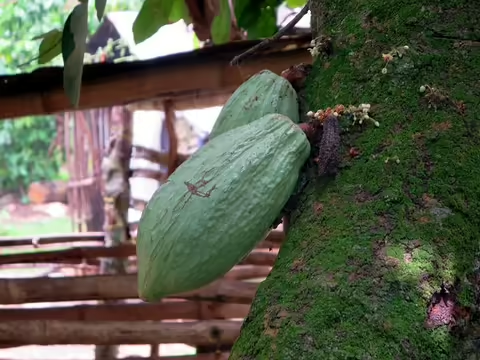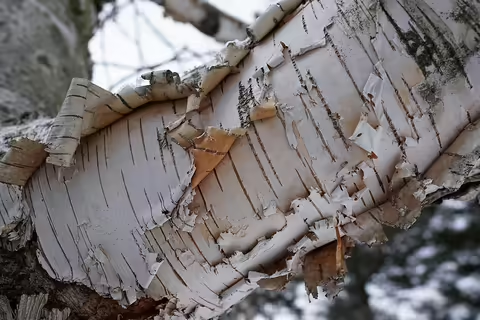
Plants have played a major role in human development for as long as people have inhabited the earth. Human interaction with plants has been and continues to be a complex relationship. Many species have provided critical resources for sustaining life, while others threaten human harm if encountered or used without caution. The scientific field of ethnobotany studies how plants have influenced cultures around the world.
Within the field of ethnobotany, species, people, and physical location change but the one through line is the abundant use of plants. From ancient cultures to the present day, here are a few ways plants and people are intertwined.
Food
Directly or indirectly, plants create the energy that nearly all life on earth depends. Through the process of photosynthesis, plants convert sunlight, carbon dioxide, and water into glucose (sugar) molecules. These sugars are available in many forms of plant material and are the foundation upon which animal life stands.
The most ancient cultures engaged with plants as food. Before plant domestication, large-scale agriculture, global economies, and grocery stores, native plants were a primary resource for sustenance. Many of the foods enjoyed today, as a part of an American diet, originated in indigenous cultures. Well-known species such as corn, beans, and squash, collectively known as the three sisters, have been cultivated in the Midwest for thousands of years. Sunflower, an important oil crop today, is native to North America and was first cultivated by indigenous tribes over 4,500 years ago.
On a global scale, some of the most beloved foods were first domesticated by ancient civilizations. Tomatoes are native to central and south America and were domesticated thousands of years ago. The Incan people are among those credited with cultivating potatoes over 8,000 years ago. The Aztec Empire is credited with being the first to cultivate peppers and create chocolate from the seeds of cacao (Theobroma cacao).
Fibers
Plant fiber is essential in the human diet and helps with digestion. These dietary fibers are found in fruit, vegetables, grains, and legumes of the human diet. However, not all plant fibers are consumable. Within a plant, some fibers function to physically support plants. These types of fibers have been harvested and utilized by people in various ways. The heartwood of trees is a strong building material. The thin outer bark of trees such as Paper Birch (Betula papyrifera) was used to cover tepees or waterproof wigwams and make snowshoes, baskets, buckets, and water vessels. Leaves and roots were harvested and used as twine or sewing materials such as jute, hemp, and flax.
Natural dyes
For thousands of years, dyes from plant parts have been used to add color to textiles, art, pottery, and bodies. Used alone or with an additive that enhances color, natural dyes are derived from various species, from various plant parts, and create nearly every color. These Midwestern native plants have been used to create a rainbow of natural dyes: Common Sunflower (Helianthus annuus), Eastern Red Cedar (Juniperus virginiana), Maple (Acer sp.), Black Walnut (Juglans nigra), Wild Blue Indigo (Baptisia australis), Onion (Allium sp.), and hundreds more. Leaves, seeds, bark, roots, and flowers are all potential sources of natural colorant. Many are available today for purchase and skilled artisans continue to create products using natural dyes.
So much more
Indigenous cultures have relied on plants for nearly all aspects of cultural development. Many more uses exist than those discussed here. Below is a brief examination of additional ways plants have influenced culture.
- Essential oils: Plants produce oils in various plant parts and are harvested and used for various reasons including flavoring and fragrance.
- Soaps and wax: Waxy cuticles of plants have been harvested for use in candles, cleaning products, and hair and skin treatments.
- Spiritual: Many cultures engage with psychoactive plants as a part of spiritual awareness and connectedness.
- Medicinal: The healing properties of plants have been used to treat various ailments for thousands of years.
For western cultures, November and December are filled with celebrations. These modern cultural events are also deeply connected to the plant world. Shared meals, festive decorations, and gifts of thanks are often plant-based and full of symbolism and tradition.
Good Growing Fact of the Week: In lab studies, plant chemicals have demonstrated the ability to stop the growth of some forms of cancer cells.
Photos: Cocoa photo: "Cocoa Pods" (CC BY 2.0) by D-Stanley. Paper birch photo: "Betula papyrifera (Paper Birch)" by Plant Image Library is licensed under CC BY-SA 2.0.
Sign up for our emails! Want to get notified when new Good Growing posts are available? SIGN ME UP
MEET THE AUTHOR
Emily Swihart is a Horticulture Educator with University of Illinois Extension, serving Henry, Mercer, Rock Island, and Stark counties since 2021. Emily provides horticulture programming with an emphasis on trees, native vegetation, and home landscape design.

